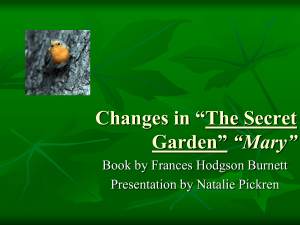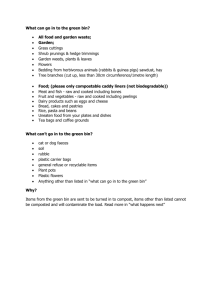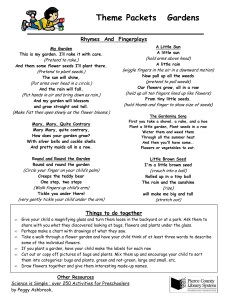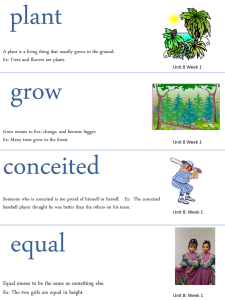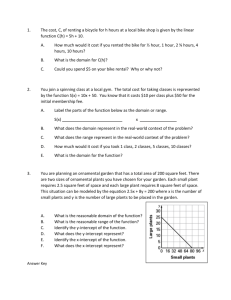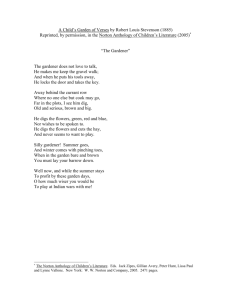Wildlife biologist Russell Link picks 10 native plants as his
advertisement
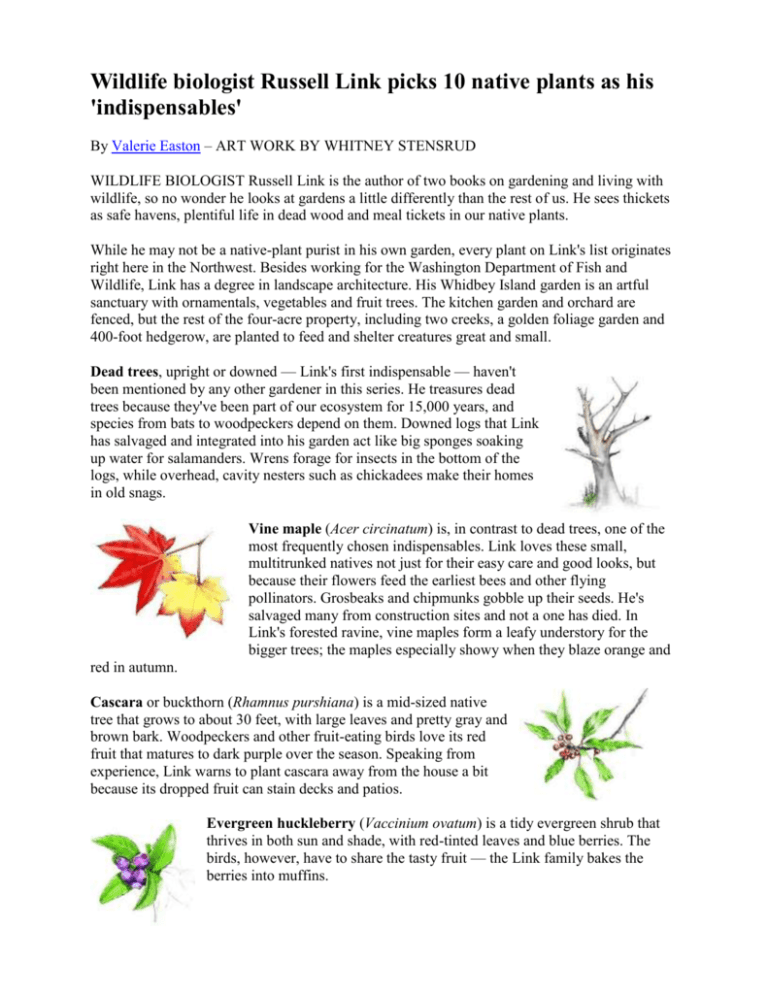
Wildlife biologist Russell Link picks 10 native plants as his 'indispensables' By Valerie Easton – ART WORK BY WHITNEY STENSRUD WILDLIFE BIOLOGIST Russell Link is the author of two books on gardening and living with wildlife, so no wonder he looks at gardens a little differently than the rest of us. He sees thickets as safe havens, plentiful life in dead wood and meal tickets in our native plants. While he may not be a native-plant purist in his own garden, every plant on Link's list originates right here in the Northwest. Besides working for the Washington Department of Fish and Wildlife, Link has a degree in landscape architecture. His Whidbey Island garden is an artful sanctuary with ornamentals, vegetables and fruit trees. The kitchen garden and orchard are fenced, but the rest of the four-acre property, including two creeks, a golden foliage garden and 400-foot hedgerow, are planted to feed and shelter creatures great and small. Dead trees, upright or downed — Link's first indispensable — haven't been mentioned by any other gardener in this series. He treasures dead trees because they've been part of our ecosystem for 15,000 years, and species from bats to woodpeckers depend on them. Downed logs that Link has salvaged and integrated into his garden act like big sponges soaking up water for salamanders. Wrens forage for insects in the bottom of the logs, while overhead, cavity nesters such as chickadees make their homes in old snags. Vine maple (Acer circinatum) is, in contrast to dead trees, one of the most frequently chosen indispensables. Link loves these small, multitrunked natives not just for their easy care and good looks, but because their flowers feed the earliest bees and other flying pollinators. Grosbeaks and chipmunks gobble up their seeds. He's salvaged many from construction sites and not a one has died. In Link's forested ravine, vine maples form a leafy understory for the bigger trees; the maples especially showy when they blaze orange and red in autumn. Cascara or buckthorn (Rhamnus purshiana) is a mid-sized native tree that grows to about 30 feet, with large leaves and pretty gray and brown bark. Woodpeckers and other fruit-eating birds love its red fruit that matures to dark purple over the season. Speaking from experience, Link warns to plant cascara away from the house a bit because its dropped fruit can stain decks and patios. Evergreen huckleberry (Vaccinium ovatum) is a tidy evergreen shrub that thrives in both sun and shade, with red-tinted leaves and blue berries. The birds, however, have to share the tasty fruit — the Link family bakes the berries into muffins. His second evergreen-shrub pick is the low-growing Oregon grape (Mahonia nervosa), with early flowers to attract mason bees to your garden. Flowering currant (Ribes sanguineum) has spectacular hot-pink flowers that are the first nectar source for hummingbirds in earliest spring. This tall, deciduous shrub is one of Link's favorite plants to weave into hedgerows. Goat's beard (Aruncus dioicus) is a statuesque perennial, forming a fat, 5foot mound of foliage topped with white, plumy flowers in summer. "It is filled with little flying pollinators," says Link admiringly. "You know it has to be important in the food web because other things are likely eating those insects." Sword fern (Polystichum munitum) is a drought-tolerant, dog-proof, tough and hardy evergreen fern that contributes year-round structure to the garden. What's not to love? Link has salvaged more than a hundred sword ferns from construction sites, and they grow thickly along pathways and down into the ravine at the back of his garden. Nodding onion (Allium cernuum), our native ornamental onion, is the single bulb on Link's list. It grows happily in rock gardens or flower borders, where its pretty lavender flowers provide nectar for bees and hummingbirds. Sweet alyssum (Lobularia maritime) is a low-growing, honeyscented annual, ideal for edging beds, borders and walkways, where its masses of white flowers light up the night. "When you go through a nursery tapping flats of annuals, all the little insects fly up off the alyssum," says Link, who considers this to be a strong recommendation. Valerie Easton is a Seattle freelance writer and author of "A Pattern Garden."Check out her blog at www.valeaston.com. Whitney Stensrud is The Seattle Times assistant art director, graphics.



